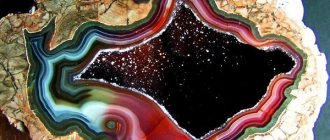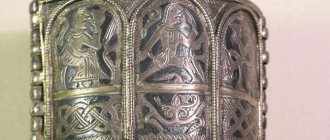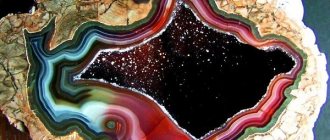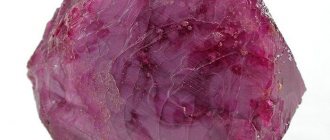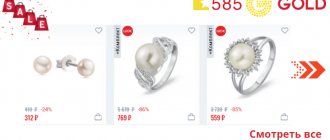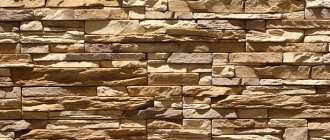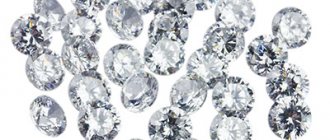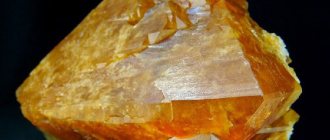A uniquely beautiful creation of nature - a durable mineral box with a surprise in the form of semi-precious crystals inside - is called by the simple Greek word “geode” (with a slight French accent).
Finding a geode is not easy, recognizing it is even more difficult, but the result will make you freeze with admiration. What is a geode?
From a geological or mineralogical point of view, any geode is a closed cavity in the rock, inside of which there are crystals of a particular mineral. The word "geode" means "spherical" and is of Greek origin. A geode consists of a hard shell-case (sometimes layered) partially filled with mineral.
The main feature of natural geodes is that the crystals that fill them will always be different from the rock in which they are found. Thus, amethyst geodes are never formed among amethysts; agate geodes cannot be found among an array of agates.
In nature, geodes form in rocks both on the surface of the earth and on the ocean floor.
In general, the geode formation scheme looks like this:
- the earth's crust cracks or cavities form in it due to volcanic activity;
- water containing minerals in the form of salts seeps into the cavity through surface cracks;
- gradually a mineral deposit forms on the walls of the cavity;
- as soon as the concentration of mineral sediment becomes sufficient, the crystallization process begins (depending on what mineral settles on the walls of the cavity, this takes tens, hundreds, and sometimes thousands of years);
- Mineral layers or crystals form inside the cavity.
Where do they come from
There are several ways to form a geode in nature. Basically the algorithm looks like this:
- Volcanic eruptions lead to the formation of mountains, cracks or cavities in the earth's crust.
- it is a durable but creaky design. Water enters through cracks, leaving a sediment of mineral salts.
- When the mineral saturation of the sediment reaches a critical level (after decades or centuries), the process of crystallization begins.
- In mine workings, the top layer of such concretions is quartz, agate, silica, chalcedony, and chrysoprase. They are filled with precious stones. They grow in layers or in the form of crystals, occupying the entire internal space.
Geode fragments are found at the bottom of the ocean.
How to grow a geode at home
It is quite possible to grow a geode at home.
Most crystals, of course, grow very slowly and are extremely demanding in terms of formation conditions, but there are also those whose cultivation does not require any special skills or long years of waiting. You can purchase a crystal growing kit or use the following recipe. The following components will be required:
- potassium alum;
- dye (it must be water soluble);
- water;
- chicken egg shell;
- glue (insoluble in water).
The eggshells must be carefully divided in half, washed and dried thoroughly.
Spread a thin layer of glue on the inner surface of the shell with a brush, and then sprinkle it with two pinches of potassium alum. Allow the egg mixture to dry thoroughly. Boil 0.5 liters of water, add ¾ cup of alum into it, stir until the alum dissolves. Then add dye until the desired shade is obtained. The resulting solution must be cooled and poured into two glasses. The next step is to lower the egg mixture into the solution so that its outer side is at the bottom of the glass.
To form a geode from potassium alum, 15 hours is enough. The more time passes, the larger the crystals will become.
Where are they found
You can find surveying where minerals are or were once mined. Particularly precious or semi-precious colored stones.
In Russia, their placers are concentrated in the Urals. Geodesists here mainly mine quartz geodes. The “cones” (as geodes are called in the Urals) are filled with rock crystal, agates, amethysts, chalcedony, and hematite.
Celestine geodesic minerals, fluorite, malachite, aragonite, amethyst
Beautiful large specimens were brought from Southeast Asia, Australia, Sri Lanka, and India.
Amethyst geodes for human growth belong to Uruguay and Brazil.
Extraction and processing
If the extraction of solid stones occurs on an industrial scale, then the discovery of druses often becomes a matter of amateurs. Searchers manually reseed rocks in already explored mines and river soils and rely only on their intuition and experience. Their finds are often small in size, and there are not always already formed druses inside.
View this post on Instagram
Posted by @sally.weis Apr 25, 2022 at 3:51 am PDT
In Russia, quartz geodes have decorative value. They contain agate, chalcedony, amethyst or hematite. Most of them are found in northern Asia and the Urals.
Interesting! In the local dialect of the Urals, geodes are called “znoryshki”. The druses in them most often consist of rock crystal.
The meticulous work of finding geodes is only a small part compared to further processing. The plaque covering the cavity is in most cases removed by long soaking in concentrated acids. Next, you need to be able to saw the geode in the correct place without destroying the tops of the crystals or displacing the center of the cavity.
How to mine
There is not a single deposit of geodes on the planet; these raw materials are whole.
Industrial mining is excluded, since the share of individual miners remains. Almost always these are stone lovers or people who want to make money by selling rare specimens.
Over the course of months or years, they manually sift rock from waste or abandoned quarries along river banks.
Science or geological instruments cannot help in this matter. You have to rely on personal experience and talent. Instead of precious crystals, there may be clay or something similar inside.
Varieties
Mineralogists classify geode specimens for a variety of reasons.
Education mechanism
Popular division according to training methods:
- Metasomatism. One mineral in the cavity is partially replaced by another. It is of interest to scientists as an indicator of processes occurring in the deep layers of the earth's crust.
- Recrystallization. Natural disasters cause the destruction of already formed crystals. Thermal waters remove impurities from this viscous mass. The “clean” sediment begins to crystallize again. The result is a transparent filling without inclusions, clouding or other defects.
The latter variety is especially popular among jewelers.
Compound
The species is determined by the main mineral in the composition:
- Limonite. Formed in iron ores. Water, filling voids or cracks, oxidizes them, forming “geodes.”
- Silica. Found in limestone cavities. Quartz druses are often hidden inside.
- Ferromanganese. Formed at the bottom of the sea or ocean.
A special type are symbiotic geodes. These are fossil shells of ammonite mollusks that went extinct millions of years ago (for this reason, geodes are often called ammonites). Filled with marble or simbirtzite pyrite.
Dimensions
The sizes of geodes are usually average, from a few to a couple of tens of centimeters.
The smallest (up to 1 cm) are called tonsils, the largest - caves. "Caves" can exceed human height.
Color
The color is determined by the composition of the main minerals.
Consequently, the commonly found amethyst geode has a deep purple hue, while citrine specimens are yellow-green.
Agate specimens are not crystalline and are identified by alternating brownish-reddish and white-gray or blue and pink layers.
Form
Fragments of various shapes are found in nature. Most often these are flattened spheroids.
The rarest, but most popular is the right sphere.
Agate geode - what is it?
First of all, you should understand what a geode actually is.
Geode is a geological formation. It forms in sedimentary or volcanic rocks. This is a closed cavity, often having a rounded shape: circle, ellipse, sphere. But isometric formations are also often encountered. The basis of such formations is stalactites, kidney-shaped, ordinary stone.
An agate geode is a formation in which this very empty cavity is completely or partially filled with growths of the mineral, sometimes in several layers. Outwardly, such a formation may look like the most ordinary rock, but a cross-section reveals a simply indescribable picture.
In nature, it can form in different sizes - from miniature specimens to human-sized aggregates. The latter, of course, become the property of museums and exhibitions.
As for the shade of the mineral in such geodes, it is impossible to determine any specific color. There are growths of a wide variety of colors. It all depends on the amount and type of impurities. But the most valuable formations are geodes with several gems. For example, you can find an agate geode with rock crystal crystals. Soft shades of blue or purple agate and the light shine of crystal make such stones masterpieces of nature, because it is simply impossible to take your eyes off them, as if the whole Universe is opening up before you.
Despite the fact that natural agate geodes, which, as a rule, do not have a very saturated color, are considered the most valuable, this does not stop scientists from artificially tinting such finds. With the help of tinting, they are given a deeper color, clear transitions from one shade to another and more pronounced layering. If you doubt the naturalness of a stone, it is better to contact specialists in the field of gemology. Only with the help of special equipment can one determine whether man interfered in the creation of such an amazing gem.
Where and how are they used?
Samples with crystals are used by collectors, stone cutters and jewelers.
Preliminary processing
In order for the extracted sample to acquire interesting conditions, multi-stage processing is used:
- The outer layer of the shell is cleaned of plaque by immersing the fragment in a special composition.
- Then it is sawed. This is the most difficult stage. You need to choose a place so as not to damage the crystals and not to shift the center of gravity.
- The cut surface is leveled and polished.
When selling jewelry and collectibles, sparkly cuts are common.
Areas of application
Where the raw materials will be used depends on the size and type of “filling”:
- Jewelers cut almond crystal geodes with semiprecious stones in half and frame them with metal inserts.
- Medium and large samples are sent to collectors.
- Exceptional examples in every sense end up in museums.
However, each product is unique: the configuration or layering of the crystal is inherently non-duplicate.
Magical properties of geodes
It is believed that the magical properties of a geode are much more powerful than the magic of a similar single crystal. Any such education will be an ideal means for harmonizing the energy microclimate - both at home and at work. The magical specialization of a geode will depend on its mineral composition, for example:
- agate
protects against negative influences (physical, mental, magical), protects against the attacks of energy vampires, and is suitable for the role of a magical protector for a child or a person who has to work in interaction with a large number of people. - Chalcedony
cleanses the living space and organizes thoughts, relieving the owner of any negativity. - Amethyst geodes
stabilize the psycho-emotional state, help cope with stress, maintain energy balance and prevent loss of strength.
The larger the geode, the more magical power it has. There is also an opinion that you can voice your cherished desires into the geode cavity, and they will come true.
Price
Russian online stores offer an assortment to suit every taste and budget. When setting the price, the type of mineral filler is important.
For example, a sample of agate (10x6x4 cm) can be bought for 2.9–3.1 thousand rubles. An amethyst of comparable size costs three times more, and limonite-goethite-siderite will cost 300-350 rubles.
Amethyst Geode
Charms and jewelry made from druzes and geodes
Geodes with semi-precious stone crystals are used by jewelers to make jewelry. Large nuggets are valuable to collectors, and the largest specimens are displayed as exhibits in mineralogy museums.
Jewelry made from natural stone druses is valued for the natural shape of the crystals, so the processing of such a find is very careful. They are only framed in metal to make jewelry. Tonsils (geodes less than 1 cm) are first sawn in half.
Video about the magical and healing properties of mineral geodes:
How to care
Almost always, geode samples are represented by shiny slits in the collection material or jewelry inserts themselves.
You need to care for them in the same way as the stones collected inside:
- For example, protect amethysts from the sun, where they will fade.
- Remove dirt only with a damp cloth, using baby soap if necessary. Under no circumstances: ultrasound or steam.
- Products or decorations are protected from falls and impacts, so that the polished cut of the geode is not damaged and the stones are not broken.
When used as a magical artifact, it can be recharged. That is, expose it to the moon or sunlight (but not the sun). This will attract wealth to the house.
Application
The use of a geode directly depends on its size. It is mainly used for the following purposes .
- Jewelry making. This option is suitable for small specimens, which are cut into separate parts and added to jewelry as inserts.
- Replenishment of collections. In this case, medium-sized specimens are sold to collectors after processing.
- The largest and most outstanding finds are given to museums.
So, we can conclude that a geode is not a type of stone, but the result of natural phenomena, which consists of different minerals. Its properties and influence on its owner depend on what crystals it is filled with.
